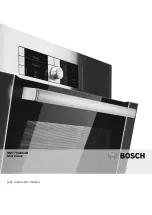
powering which the user expects to encounter.
Variants of these types are also available, offer-
ing different output levels and/or extended
frequency range. Each amplifier works only with
the specific type and voltage(s) of power ing
for which it is designed.
Please note:
The two amplifiers in a stereo pair
of CMC microphones should be of the same
type. For critical applications, pairs of capsules
can be selected at the factory for pre cisely
matched sensitivity and frequency response.
(A small extra fee is charged for this service.)
Most modern, solid-state professional micro -
phones use a standardized powering scheme
known as ”phantom powering,” and most
recording equipment offers a 48-Volt supply
for such microphones. Some equipment, how-
ever, provides a 12-Volt supply for phantom
powering, or can be readily modified to provide
such a supply. The
SCHOEPS
CMC 6 amplifier
series can work with either voltage, switching
its circuitry automatically to the corresponding
mode of operation. It maintains the same level
of performance in either mode, while drawing
only the necessary amount of current from the
phantom supply.
Note that the CMC 6 is designed to work
with standard 12-Volt or standard 48-Volt
phantom powering, but it is not a ”12-to-48
Volt” microphone. Any input to which it is
connected must implement one of those two
standard phantom powering methods. Not
only must the supply voltage meet the stan-
dard; the resistors must be correct as well.
For applications in which it is certain that only
48-Volt or only 12-Volt phantom powering
will be used, the CMC 5 and CMC 3 (respec -
tively) remain available at slightly lower cost.
The CMC 6 offers greater flexibility in powering
as well as superior immunity to radio-frequency
interference; it is also the only amplifier model
which can be delivered in the special ”xt” ver-
sion (see description under ”Special Versions”
below).
From an audio standpoint, the most signifi-
cant difference between the CMC 6 and the
CMC 3 or 5 is the response at the very lowest
audio frequencies: The standard version of the
CMC 6 has a 12 dB/octave rolloff below 20 Hz
as a protection against infrasonics, while the
stan dard version of the CMC 3 or 5 has a 6 dB/
octave rolloff below 30 Hz. Any CMC amplifier
can be specially ordered, or modified after
delivery, for any desired rolloff frequency within
reason; please see the description of the CMC
”linear” version for further details.
In general if a 48-Volt microphone is con-
nected to 12-Volt phantom powering, no dam-
age will occur but the microphone will not work
properly. On the other hand a CMC 3 could
be powered safely and effectively by a 48-Volt
phantom supply if it can provide 11 mA per
microphone. But that current exceeds what is
required for standard 48-Volt phantom power-
ing, and unfortunately many existing supplies
do not even meet the standard. Therefore this
mode of operation should not normally be
relied upon.
In the realm of film and video sound an
older system called ”parallel powering” or ”T”
powering (”Ton ader spei sung”) at 12 ± 1 Volts
is sometimes still used, particularly with Nagra
tape recorders; the CMC 4 amplifier model
works with that system. See Fig. 3, p. 6 for a
schematic diagram; since this method of pow-
ering has been in decline for some time now,
it is not described in detail in this manual.
Please contact your
SCHOEPS
dealer or
SCHOEPS
GmbH with any questions concerning its use.
Special Versions
CMC 6 U”xt” – the 40 kHz version
This variant is indicated by the letters ”xt”
engraved on the output socket. When an ”xt”
amplifier is used with any axially-addressed
Colette capsule, the response range of the
microphone will extend beyond 40 kHz. The
response above 10 kHz will also be elevated
slightly. Specific frequency response curves
can be seen in our main catalog or on our
Web site, www.schoeps.de .
CMC “+5 dB”
The sensitivity of a microphone with this ampli -
fier variant is 5 dB above the normal type,
while the equivalent noise level is somewhat
GmbH · Spitalstr. 20 · D-76227 Karlsruhe (Durlach) · Tel: +49 721 943 20-0 · Fax: +49 721 943 2050
www.schoeps.de · [email protected]
Types of Microphone Amplifiers
Microphone Amplifiers
4





































